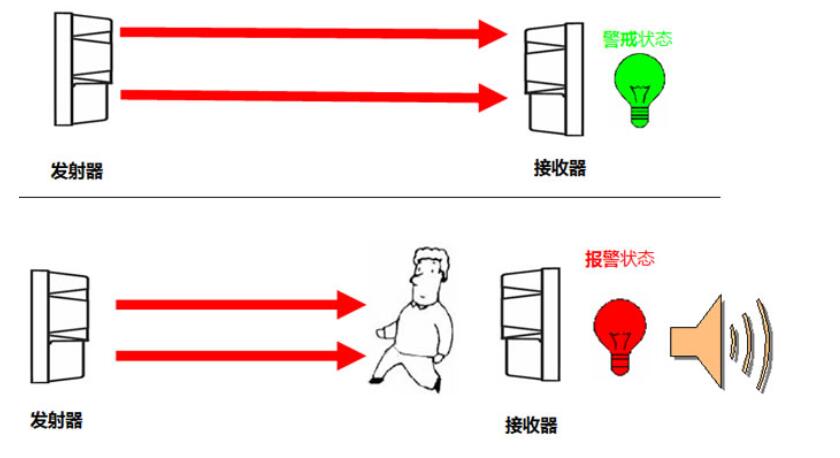Active infrared intrusion detector consists of active infrared transmitter and active infrared receiver. When the infrared beam between the transmitter and receiver is completely blocked or blocked according to a given percentage, the device that can generate alarm state is called active infrared intrusion detector. Active infrared detector consists of infrared transmitter and infrared receiver. The infrared transmitter sends a modulated beam of infrared light to the infrared receiver. The detector will not alarm when there is no shield between the transmitter and the receiver. When there is an object block, the receiver output signal changes, detector alarm.

2, active infrared detection principle diagram
Power supply part:
The detector is provided with stable low-voltage DC power supply. The input voltage of our products is DC10.5V ~28V, and DC24V is recommended.
Detection part:
Active infrared transmitting and receiving element.
Control part:
The electrical signals from the detection part are amplified, filtered, limited and judged.
Output part:
The transmitter outputs the active infrared signal and the receiver outputs the switch signal to the alarm host when detecting.
3. Characteristics of active infrared infrared detector
- Response time:
When the signal of active infrared detector is completely or according to the given percentage of the duration is greater than 40ms, the detector should produce alarm state. Why give a range? The reason is that different parts of the use can set (adjust) different minimum blackout time, which is beneficial to reduce the false alarm system. Our company's active infrared response time is generally adjustable between 50ms~500ms, the specific value can be determined by the actual field environmental test.
- Infrared emission Angle
The infrared beam emitted by the active infrared transmitter should have a certain divergence Angle, which is convenient for engineers and technicians to install and debug the equipment. Our country stipulates that the transmitting Angle of the transmitter should be greater than 30 degrees, but in order to reduce false alarm, the axis of the transmitter and the receiver should coincide as far as possible during installation and use.




